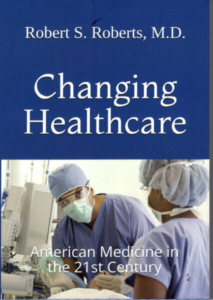Last post I discussed the Covid-19 Relief Bill and the benefits it will provide for all those impacted by the pandemic. That much could be achieved with no more than $825 billion of this $1.9 Trillion-dollar bill. That was the good news. The bad news began with the revelation that the bill would try to bail out ObamaCare by providing supersized subsidies to middle class Americans. (see Covid-19 Relief Bill to Relieve ObamaCare.)
But the bad news gets much worse. Casey B. Mulligan and Stephen Moore, two highly respected economists, now report the bill will kill jobs. Writing in The Wall Street Journal, they say, “President Biden’s $1.9 trillion Covid-relief package is being sold as an effort to ‘get America back to work.’ It will do the opposite. We estimate that between five and eight million fewer Americans will be employed over the next six months if the bill passes.”
They say the bill would create one of the largest expansions in government welfare benefits since the birth of the modern welfare state. In combination with December’s $900 billion package, the new bill would expand the safety net to include six months of weekly $400 bonus unemployment benefits on top of the normal weekly benefits, a $3000 per child tax credit, an expansion of food stamps and rental assistance, $2000 per person checks, and expanded health benefits.
This is a reversal of the highly successful Clinton era welfare reform. It would repeal many of the successful work requirements of that plan and it contains only minimal requirements in exchange for its cash payments and other benefits. Moreover, unlike wages and salaries earned from work, many of these benefits are tax-free. That raises the disincentives for working. There is no 7.65% payroll tax deducted from an unemployment check. There are even six states where unemployment benefits are not subject to income taxes.
To illustrate the absurdity of this situation, consider the following example: In Kansas, a family of four with two unemployed adults who had earned U.S. median wages could get paid, including the Biden add-on package, the after-tax equivalent of more than $135,000 on an annual basis without working a single hour. In Massachusetts, that figure is $170,000. This doesn’t even include any housing or rental assistance the family may also receive. To put this in perspective, the Biden package of benefits would exceed the wages and salaries of at least 85% of households.
Perhaps the most egregious part of this plan is the $400 a week bonus above and beyond the normal unemployment benefits. Mulligan and Moore calculate this bonus offers roughly 60% of unemployed workers more money for not working than for returning to their jobs. For historical comparison, during the recession of 2009, the Obama administration provided supplemental bonuses of $25 per week.
The Trump administration must take some of the blame for this since they approved $600 per week bonuses short-term during the early lockdowns of the virus pandemic. With that precedent, the Biden plan gets less scrutiny even though it is proposed for a longer period of time when the economy is already on the rebound.
These economists accurately predicted the impact the Trump administration bonuses would have when the original Cares Act legislation passed in early 2020. They said this added benefit would reduce employment by millions when jobs came back and Labor Department statistics confirmed millions of jobs went unfulfilled last summer. Now they predict the same will happen, lowering employment by five to seven million jobs. Add another million jobs or more if the $15 per hour minimum wage passes in the bill.
They propose a better solution is suspending the payroll tax for jobs that pay $100,000 or less per year. This would provide an immediate 7.5% raise and would cut the cost of hiring unemployed workers by the same amount.
Why would the Biden administration want to kill jobs when they say their goal is to “get America back to work.” I’ll let economists Mulligan and Moore try to answer that question. They say, “President Biden’s bill will make millions more Americans dependent on checks from the government, not an employer. Could that be the point?”


